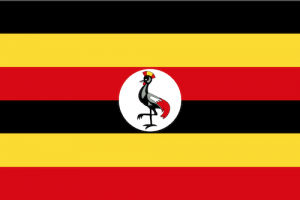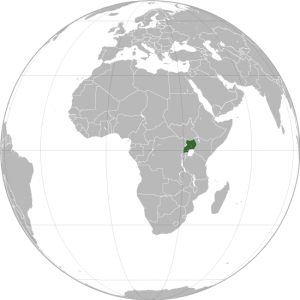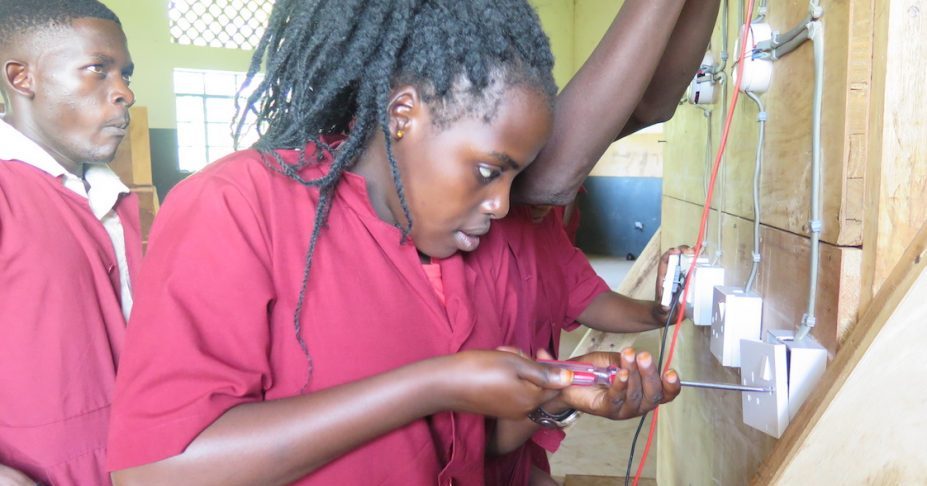
UGANDA AT A GLANCE
A country’s struggle against poverty
Uganda's green and varied landscape once earned it the name of "the Pearl of Africa".
The presidential republic with its multi-party system and almost 40 million inhabitants is divided into four regions and a constantly growing number of districts: in 2019 the number is expected to reach 121.
Uganda, like many other African countries, is a multi-ethnic state: around 60 ethnic groups live here together.

"Most of the population lives in rural areas, poverty is a major issue"
Uganda has the ninth highest population growth worldwide. The majority of Ugandans live in rural areas in extreme poverty1. The people in the country face a daily struggle for the most basic necessities. According to official figures, 69 per cent of the population still live from subsistence farming.
The informal sector continues to grow: the manufacture and sale of small items, small-scale services and the like provide extra income for many. In the capital Kampala, the building boom is providing an increasing number of people with a better standard of living.

HISTORY
Like so many African states, Uganda experienced a series of ups and downs in the last century. The territory of modern Uganda was a British "protectorate" from 1896. In 1962 Uganda became an independent federal republic with Sir Edward Mutesa as president and Milton Obote as prime minister.
Four years later, Obote had overthrown the president and appointed himself head of government. Parts of the economy were nationalised, and there were bloody protests and massacres.
Army commander Idi Amin's coup d'état in 1971 was followed by his eight-year reign of terror: around 300,000 people died violently during this period, thousands fled abroad. In 1979 the "Butcher of Africa" was overthrown.
A year later, Milton Obote returned to power. Initially welcomed, Obote was another despot whose tyranny even surpassed Amin's: by the end of the Obote regime in July 1985 around one million people had died.
Since then, Yoweri Kaguta Museveni, one of Obote's bitterest opponents, has been head of state. Museveni was most recently confirmed as president in 2016. To allow him to run for office in the next elections in 2021 the age limit of 75 stipulated in the Ugandan constitution has already been abolished.
Capital: Kampala
Region: Sub-Saharan Africa
Total area: 241.550 km²
Population: 42.723.139 (2018)
Rural population: 76 % of total population (2018)
GDP per capita: 643.14 US$ (2018)
Access to electricity: 22 % of the population (2018)
Human Development Index (HDI): 162th of 189 states (2017)
Sources: Energypedia, Liportal, UNDP

ECONOMY, EDUCATION, HEALTH
Uganda was one of the first African countries to address HIV/AIDS in public discourse. Education campaigns and prevention have led to great success. However, according to the WHO, there has been little progress in the health sector in recent years. Child and maternal mortality remains high in the country and malaria is a major problem. In public health centres treatment is free, but there is a constant shortage of medicines and medical staff.
Access to education remains difficult for the people of Uganda. For children and young people, who make up about half of the population, the chances of a good school-leaving certificate and adequate vocational training are poor. Although primary school education has been free for many years, the classes are usually overcrowded and the teachers inadequately trained. Since 2007 there have also been free secondary schools in Uganda, which has increased the proportion of children who can attend secondary school. Good state vocational schools are still rare. However, through initiatives such as Jugend Eine Welt's solar programme, there has been progress in vocational education.
ENERGY
Uganda has an electricity consumption of around 215 kWh per capita and year. The country is thus far below the global average consumption of 2,975 kWh per year2. In 2018, only 22 per cent of the population had access to electricity, and in rural regions the figure is even lower.
By far the most important energy sources in Uganda are still firewood and charcoal. Around 90 per cent of energy consumption is generated by biomass. This has led to widespread and partly illegal deforestation. Heating with wood also leads to air pollution and health problems.
"Access to electricity for the population is very low, especially in rural areas."
The country is rich in sustainable energy sources. Despite this, the share of renewable forms of energy is still very low. The Ugandan government has reformed the energy sector in order to focus on the generation and distribution of energy. Private investment in renewable energy forms, such as solar energy, is now easier.
1 www.liportal.de/uganda - das Länder-Informations-Portal
2 energypedia, Uganda Energy Situation: www.energypedia.info/wiki/Uganda_Energy_Situation
